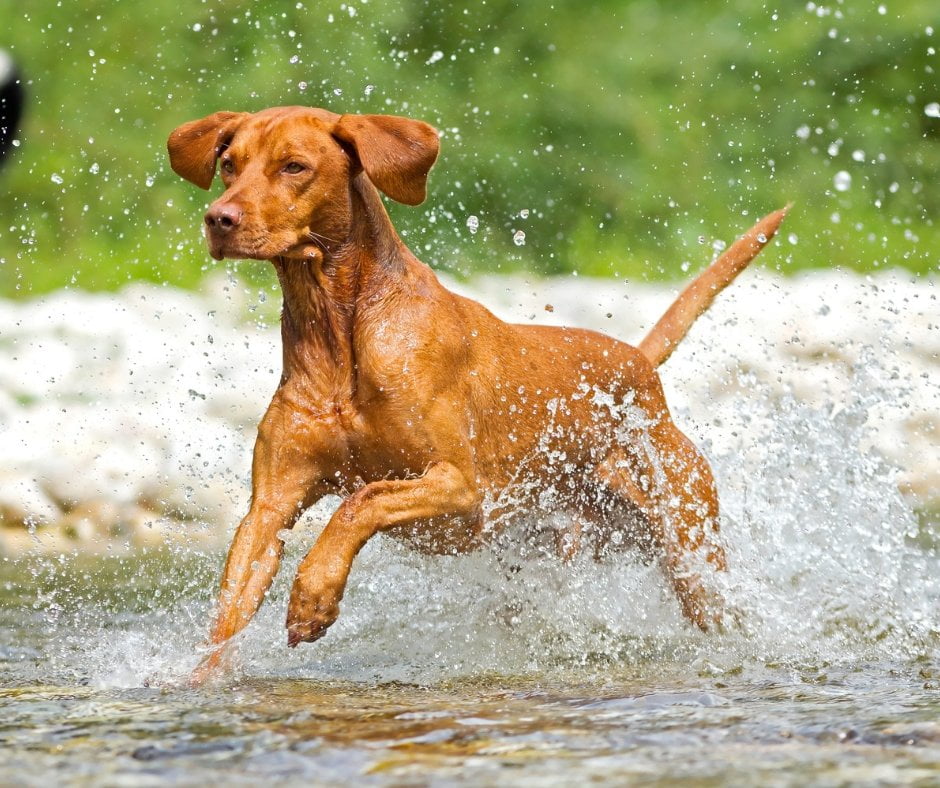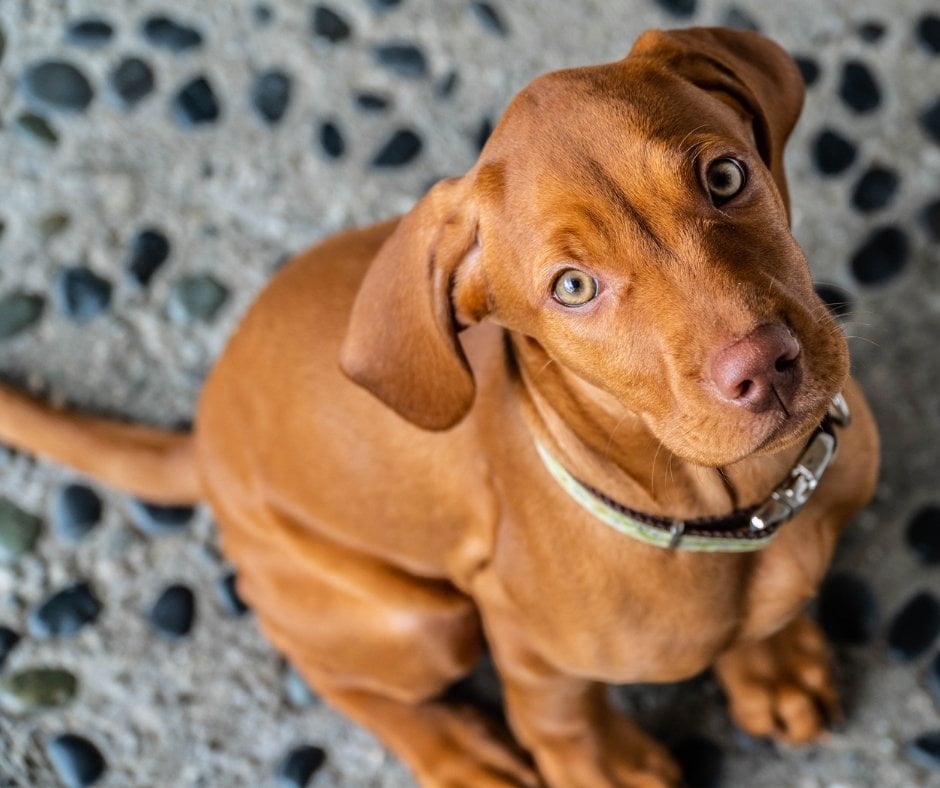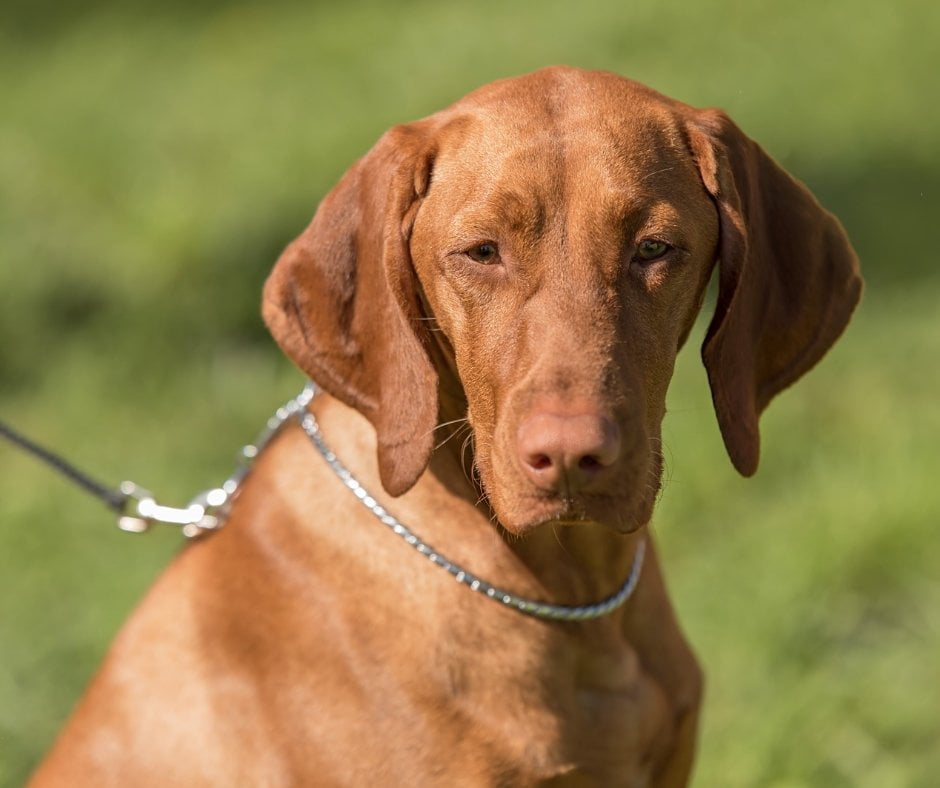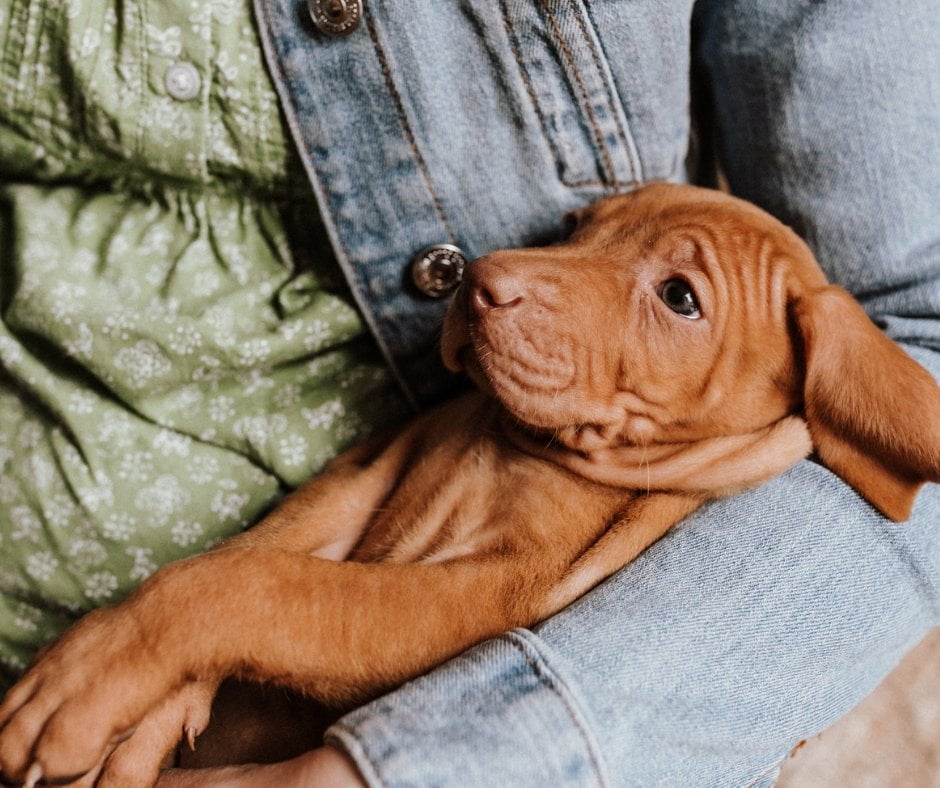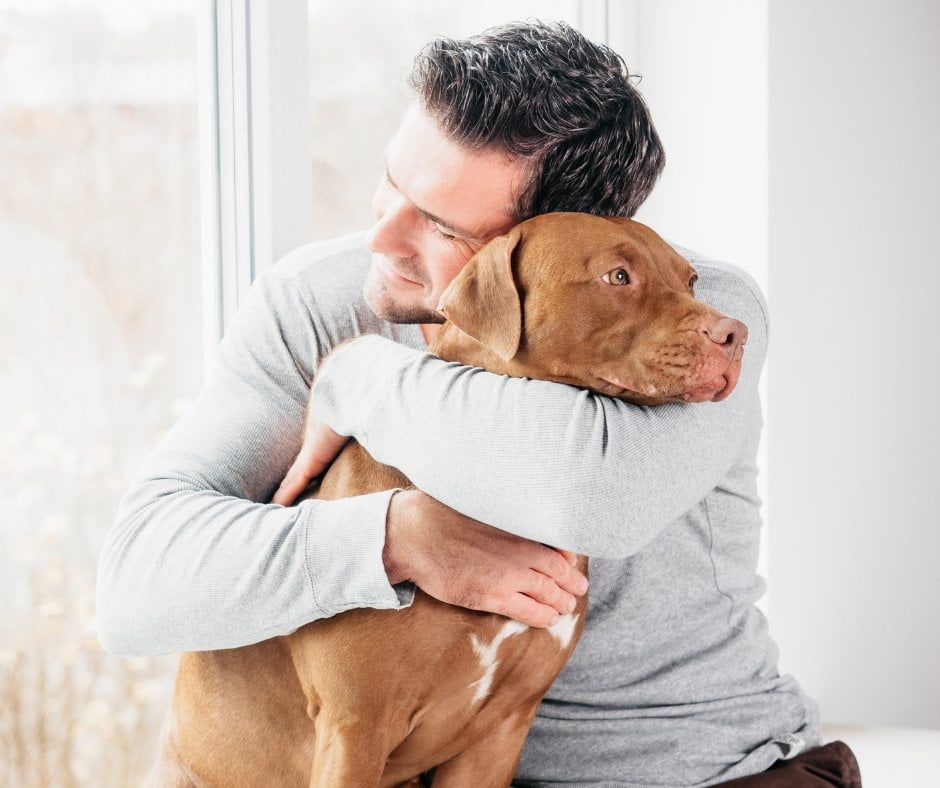Vizslas Dog Breed Information Guide – All About Hungarian Vizslas
Learn all about Hungarian Vizslas, including facts, lifespan, size, colors, history, appearance, temperament, behavior, health and care needs, nutrition, training, suitability for children and much more.
Vizsla facts and information. Informative Vizsla dog breed information profile includes the Vizsla history, appearance, temperament, health issues, care, nutrition and feeding, behavioral, social, training and grooming needs and much more.
Includes Vizsla photos, as well as information on finding a reputable Vizsla breeder offering puppies for sale. Viszla dog breed facts information.
All About the Hungarian Vizsla
 Looking to add an attractive redhead to your life? Look no further than the Hungarian Vizsla. This breed, characterized by a shiny russet coat, elegant bone structure, and a keen, willing nature, is sure to meet your needs.
Looking to add an attractive redhead to your life? Look no further than the Hungarian Vizsla. This breed, characterized by a shiny russet coat, elegant bone structure, and a keen, willing nature, is sure to meet your needs.
Hailing from Hungary, the Vizsla is esteemed in its native land as an excellent sports dog and family pet. This breed, which loves water, is notably skilled as a pointer of game and a dependable waterfowl retriever.
A medium-sized dog breed, the Vizsla stands around 21 to 25 inches tall and weighs between 44 and 66 pounds. With its active and sporty nature, the Vizsla is an ideal pick for energetic families. Its loyalty and affection, coupled with its intelligence, make it a wonderful pet, and it can be easily trained with steady effort and a strong hand. The Vizsla requires ample regular outdoor exercise and is best suited for a rural home. Grooming needs are low; its short, glossy coat only needs to be polished occasionally with a soft cloth to maintain its vibrant red color. If you’re in the market for a beautiful, lively, smart, and loving family pet, a Vizsla puppy could be the perfect match for you!
Vizsla Facts
The Vizsla is a dog breed from Hungary and belongs to the Federation Cynologique Internationale group 7, the Canadian Kennel Club group 1, and the American Kennel Club. The Hungarian or Magyar Vizsla or Smooth-Haired Vizsla are sporting dogs and loyal companions. Wikipedia
Hypoallergenic: No
Life expectancy: 12 – 15 years
Temperament: Affectionate, Energetic, Loyal, Quiet, Gentle
Weight: Male: 20–29 kg, Female: 18–25 kg
Height: Male: 56–64 cm, Female: 53–61 cm
Colors: Golden Rust, Golden, Red Golden
Vizsla History
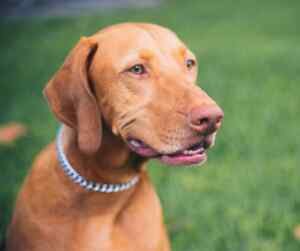 The Hungarian Vizsla is a unique and highly esteemed dog breed that originally hails from Hungary. They have a distinct pronunciation for their name, Vizh-la, with the “zh” sounding like the “zh” in the word “vision”. This dog breed is highly sought after and well-regarded due to their excellent abilities in game bird hunting. Their skillset doesn’t end there, though. They also have a balanced, even-tempered personality, making them an ideal companion for families.
The Hungarian Vizsla is a unique and highly esteemed dog breed that originally hails from Hungary. They have a distinct pronunciation for their name, Vizh-la, with the “zh” sounding like the “zh” in the word “vision”. This dog breed is highly sought after and well-regarded due to their excellent abilities in game bird hunting. Their skillset doesn’t end there, though. They also have a balanced, even-tempered personality, making them an ideal companion for families.
The lineage and history of the Vizsla breed are subjects of much debate and speculation, with two main theories existing. The first, and more commonly accepted theory, is that the Vizsla has a long history, dating back to the early periods of Hungarian history. Proponents of this theory believe that the Vizsla’s ancestors were the dogs used for hunting by the Magyar tribes. These tribes resided in the Carpathian Basin around the Eighth Century. Evidence for this theory can be found in primitive stone etchings, which appear to depict dogs similar to today’s Vizsla.
The second theory presents a much more recent origin for the Vizsla breed. This theory suggests that the breed is a product of the past century, and was developed through the breeding of Weimaraners and other pointer breeds. This theory indicates that the Vizsla we know today was intentionally created to embody the best traits of these breeds.
While both theories offer different perspectives on the breed’s history, there is no doubt that the Hungarian Vizsla has made its mark as a prized hunting dog and beloved pet. Whether their lineage dates back centuries or a mere hundred years, their popularity and reputation as excellent hunting dogs and wonderful family pets remain unchallenged.
Vizsla Appearance
 Vizslas are a breed of dog that is frequently misidentified as Rhodesian Ridgebacks without the characteristic ridge. This confusion is largely due to their similar physical attributes and coat colors. However, a key distinguishing feature is that Rhodesian Ridgebacks possess a unique ‘ridge’ along their backs, which Vizslas do not have.
Vizslas are a breed of dog that is frequently misidentified as Rhodesian Ridgebacks without the characteristic ridge. This confusion is largely due to their similar physical attributes and coat colors. However, a key distinguishing feature is that Rhodesian Ridgebacks possess a unique ‘ridge’ along their backs, which Vizslas do not have.
Additionally, Vizslas are often compared to Weimaraners, a breed of dog native to Germany. This is due to the fact that Vizslas and Weimaraners share certain similarities in physical appearance and behavior. Both breeds have sleek, short-haired coats, athletic builds, and are known for their high energy levels and strong hunting instincts. These similarities are not surprising, as Vizslas and Weimaraners are considered ‘cousin’ breeds.
Vizslas, however, come in two distinct coat types: smooth or wire-haired. The smooth-coated Vizsla has a short, sleek coat that lies close to the body, while the wire-haired Vizsla has a coarse, wiry coat that provides extra protection in harsh weather conditions.
Interestingly, the Canadian Kennel Club (CKC) and the Kennel Club of the United Kingdom (KC UK) consider the smooth-coated and wire-haired Vizslas as separate breeds. This is due to the differences in their coats, and possibly other minor differences in physical characteristics and temperament.
In terms of size, male Vizslas typically weigh between 55 and 65 pounds (25-29 kilograms), while females are slightly smaller, usually weighing between 45 and 55 pounds (20-25 kilograms). This medium size contributes to their versatility as both family pets and hunting dogs. Despite their relatively compact size, Vizslas are known for their strength and endurance, traits that were prized in their ancestral homeland of Hungary where the breed originally developed.
Vizsla dog breed photo gallery
Vizsla Temperament
Generally calm, intelligent, easy to train and protective in his loyalty – though not aggressively protective. Energetic and lively, well-mannered, affectionate though fearless with a well developed protective instinct. As a scenting dog, sensitive but should not be shy.
This description pertains to a breed of dog that possesses a demeanor that is primarily calm. This implies that the dog is not easily ruffled or unsettled and is likely to respond to situations with a certain level of tranquility and composure.
The dog is also intelligent, indicating that it has the capacity to learn, comprehend, and solve problems swiftly and efficiently. Such intelligence in a dog can be very beneficial, as it can be trained to perform a variety of tasks and commands.
The dog is also easy to train, which points to its high levels of obedience and its ability to quickly grasp and follow instructions. This makes it an ideal pet for those looking for a dog that can easily adapt to their lifestyle and daily routines.
The loyalty of the dog is also noteworthy. The dog is protective, although not in an aggressive manner. This means that while the dog is likely to guard its owner and surroundings, it will not resort to unnecessary aggression.
This breed is energetic and lively, indicating that it enjoys physical activities and play. Despite this energy, the dog is well-mannered, implying that it behaves appropriately and respects boundaries.
The affectionate nature of the dog shows that it is loving and enjoys the company of humans. However, the dog is also fearless, signifying its bravery and courage. Its protective instinct is well developed, meaning it will not hesitate to protect its owner or territory when necessary.
This breed is also a scenting dog. This means it has a very keen sense of smell and can be trained to track scents, making it useful for tasks like search and rescue. However, despite this sensitivity, the dog should not be shy. This implies that the dog should be confident and outgoing, not retreating or hiding in unfamiliar situations or environments.
Vizsla Activity and Exercise Needs
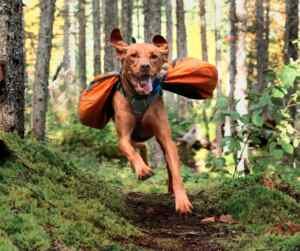 Vizslas are an incredibly active and energetic breed of dog known for their high energy levels and need for regular exercise. They are not the type of dogs to sit idle and need constant stimulation both mentally and physically. Without it, they have the potential to become restless, anxious, and even destructive. This is why they need a lifestyle that includes regular exercise and a chance to exert themselves at times.
Vizslas are an incredibly active and energetic breed of dog known for their high energy levels and need for regular exercise. They are not the type of dogs to sit idle and need constant stimulation both mentally and physically. Without it, they have the potential to become restless, anxious, and even destructive. This is why they need a lifestyle that includes regular exercise and a chance to exert themselves at times.
For example, regular play-time is crucial for Vizslas. This could include fetch, tug-of-war, or any other game that involves running, jumping, or otherwise exerting energy. These games not only keep the Vizsla physically fit but also engage their minds, preventing boredom and the behavioral issues that can come with it.
Walking is another effective way of ensuring that your Vizsla gets adequate exercise. This not only provides the dog with physical activity but also serves to stimulate their senses, as they get to explore their environment. Daily walks, preferably in the morning or evening when temperatures are cooler, can help keep a Vizsla happy and healthy.
Vizslas, like all sporting breeds, require a good deal of exercise to remain healthy and happy. They are athletic dogs that thrive on activity, and their bodies are built for endurance and speed. Therefore, it’s essential that they have the opportunity to burn off their energy in a productive and safe way.
A bored Vizsla is one that is likely to engage in unwanted behavior, such as chewing anything and everything in your home. This breed can become destructive when they are not given enough to do. They are intelligent dogs, and without enough mental and physical stimulation, they can become stressed and anxious, leading to destructive behavior.
To avoid this, it’s recommended that Vizslas get thirty minutes to an hour of exercise daily in a large off-leash area. This gives them the chance to run around freely, exploring their surroundings, and burning off energy. This will not only help keep your Vizsla physically healthy but also mentally stimulated, reducing the chances of them engaging in destructive behavior.
In conclusion, owning a Vizsla requires commitment to their physical and mental well-being. They are a breed that thrives on activity and stimulation, and without it, they can become restless and destructive. The key is to provide them with plenty of opportunities to exercise, play, and explore.
Vizsla Nutrition and Feeding Schedule
 Vizsla Nutrition
Vizsla Nutrition
Vizslas are active breed dogs that require a balanced diet to maintain their high energy levels and overall health. Their nutrition should consist of the following:
1. Protein: Vizslas require a diet high in quality protein to support their muscle development. Protein should make up about 25-30% of their diet. Sources of quality protein can include chicken, beef, fish, and lamb.
2. Carbohydrates: Carbohydrates provide the energy needed for active breeds like Vizslas. Complex carbs such as sweet potatoes, brown rice, and oats are excellent choices.
3. Fats: Fats are a crucial part of a Vizsla’s diet as they help to maintain a healthy skin and coat. Omega-3 and omega-6 fatty acids, found in fish oil and flaxseed, are particularly beneficial.
4. Vitamins and Minerals: A well-rounded diet for a Vizsla should also contain a variety of fruits and vegetables, which provide the necessary vitamins and minerals.
5. Water: Always ensure your Vizsla has access to fresh, clean water.
Feeding Schedule
The feeding schedule for a Vizsla will vary depending on its age, size, and activity level.
Puppies: Vizsla puppies need to be fed more frequently than adults. They should be fed 3-4 times a day until they reach six months of age.
Adults: Adult Vizslas can be fed twice a day. It’s important to maintain a regular feeding schedule to avoid overfeeding and obesity.
Active Vizslas: For Vizslas that are particularly active or those that participate in dog sports, they may require more frequent meals or larger portion sizes to meet their energy needs.
Always consult with your vet to determine the appropriate feeding schedule and portion sizes for your specific Vizsla.
Remember, every dog is unique and may have specific dietary needs. Always monitor your Vizsla’s weight, energy levels, and overall health and adjust their diet as needed with the guidance of a vet.
Vizsla Grooming Info
 Care and upkeep of your Vizsla dog or puppy is relatively simple – a gentle brushing, once or twice a week, will suffice and will help to keep his coat glossy by stimulating the oils in his coat and helping to free and remove any dander. To brush your Vizsla, use a soft-bristled brush and go with the grain of hair, brushing in a gentle and flicking motion.
Care and upkeep of your Vizsla dog or puppy is relatively simple – a gentle brushing, once or twice a week, will suffice and will help to keep his coat glossy by stimulating the oils in his coat and helping to free and remove any dander. To brush your Vizsla, use a soft-bristled brush and go with the grain of hair, brushing in a gentle and flicking motion.
He will love the free back-scratching and look forward to your time spent together. A Vizsla shouldn’t need to be bathed too often either; once or twice a month is usually a good bet, provided that you don’t have an individual who rivals the old Peanuts character “Pig Pen.”
Aside from this, the only other major grooming needs that a Vizsla requires are keeping his nails clipped, his ears clean and, if he will let you, his teeth brushed. Should tooth-brushing be an issue, however, there are a variety of toys and treats now available, which help to reduce tartar build up and tooth decay.
Vizsla Training Info
Vizslas, a highly intelligent breed of dogs, are known for their exceptional ability to learn and be trained. They are characterized by their remarkable stamina and control, which can sometimes pose a challenge for people who are not used to handling dogs. However, once you become familiar with their temperament and behavior, training them becomes fairly straightforward.
Taking your Vizsla to obedience classes is strongly advised, especially for those who are new to training dogs. These classes not only provide your dog with basic training commands and instill obedience, but they also help you, as the owner, to understand your new puppy better. This includes understanding the learning methods to which your Vizsla puppy responds best.
As you and your Vizsla engage in the training process, you will find that you are both learning from each other. This mutual process of learning can enable you and your Vizsla to teach each other new tricks in no time. The intelligence and trainability of Vizslas make them a rewarding breed to raise, given the right approach and understanding of their unique characteristics.
Vizsla Health Info
Like any breed of dog, the Vizsla is subject to a variety of health concerns. Your best bet is, when deciding to choose a new Vizsla puppy, check around with several breeders and ask about the various health issues that can affect these beautiful little dogs. A reputable breeder should be well-versed in the health concerns and should be able to give you more details, as well as showing you the sire and dam of your potential puppy. Some of the health problems that can affect Vizslas include:
- Autoimmune Disease
- Cancer
- Epilepsy
- Eye Problems
- Hip Dysplasia
Is a Vizsla Right For You?
The Vizsla, a breed known for its beauty and energetic athleticism, may not be the ideal pet for everyone. The breed’s vibrant energy and physical needs make it a less suitable choice for those living in compact spaces, such as apartments. This is primarily due to the Vizsla’s high exercise needs, requiring frequent outings to large, open spaces where they can freely run and stretch their legs.
Don’t be fooled by the sweet, innocent face of the Hungarian Pointer, as this breed is also known. They have a mischievous streak and are quick to exhibit their displeasure when not sufficiently stimulated. One common way they express this is through chewing on items around the house, which may very well include your favorite pair of slippers.
Nevertheless, for some people, these traits make the Vizsla an ideal pet. If you’re an individual who appreciates an energetic and hardworking breed, particularly one with a hunting background, the Vizsla might be the perfect match for you. This breed’s dynamic energy and diligent nature could make them an exciting and rewarding addition to your life. If these traits align with your lifestyle and preferences, then you might want to consider introducing one of these magnificent canines into your home today!
finding a reputable Vizsla breeder offering puppies for sale
 Finding a reputable Vizsla breeder offering puppies for sale is a process that entails thorough research and patience. Here’s a step-by-step guide on how to go about it.
Finding a reputable Vizsla breeder offering puppies for sale is a process that entails thorough research and patience. Here’s a step-by-step guide on how to go about it.
1. Research Vizsla Breed: Start by understanding the Vizsla breed. This Hungarian dog breed is known for its intelligence, agility, and affectionate nature. They are also known to be healthy with few genetic issues. However, they require plenty of exercises and mental stimulation. Knowing these facts will help you gauge whether a breeder is well-informed about the breed.
2. Online Search: Utilize the internet to identify Vizsla breeders who have puppies for sale. Websites like the American Kennel Club (AKC) can help you find registered breeders.
3. Check Breeder’s Reputation: Once you’ve identified potential breeders, investigate their reputation. Check online reviews, social media platforms, and pet forums for feedback from previous customers.
4. Visit the Breeder: If possible, visit the breeder’s premises. This allows you to view the environment in which the puppies are raised. A good breeder will keep their dogs in a clean, spacious, and stimulating environment.
5. Check Health Tests: Reputable breeders should conduct health tests on their dogs. For Vizslas, these can include hip dysplasia and eye conditions screenings. Ask to see the health certificates of both parent dogs.
6. Meet the Parent Dogs: Meeting the parent dogs will give you a good idea of the temperament and appearance your puppy will have when they grow up.
7. Ask Questions: A good breeder will be knowledgeable about the breed and willing to answer all your questions. They should also ask you questions to ensure you are a suitable owner for their puppies.
8. Review Contract: Reputable breeders usually provide a contract that outlines the terms and conditions of sale. It may include spay/neuter clauses, health guarantees, return policies, and more. Read this carefully before committing.
9. Price: While cost shouldn’t be the deciding factor, it’s important to note that reputable breeders often price their puppies higher due to the extensive care and health tests they undergo.
10. Post-Sale Support: Good breeders will offer support even after you have taken the puppy home. They can provide advice on diet, exercise, training, and health issues.
By following these steps, you can ensure that you find a reputable Vizsla breeder who prioritizes the health and wellbeing of their dogs. Remember, a good breeder is an invaluable resource to you as a pet owner.
More Information about the Vizsla Dog Breed
Page Summary: Vizsla facts and information. Informative Vizsla dog breed information profile includes the Vizsla history, appearance, temperament, health issues, training and grooming needs and much more. Includes Vizsla pictures and photos, as well as information on finding a responsible Vizsla breeder offering puppies for sale. Viszla dog breed facts information.

